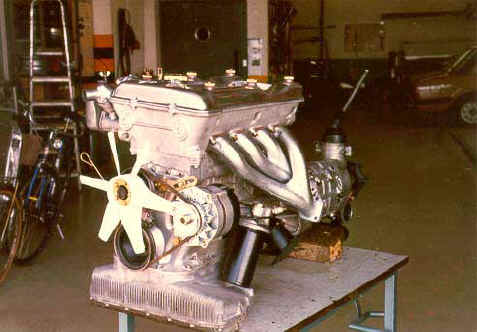
Via Veloce by Wille R. www.veloce.se since November 1995 and still here.
Alfa Romeo Duetto 1966 - 1969 FAQ --![]()
The new 1779cc engine was of course the major new component of the 1750 Spider Veloce. First, it has a larger oil sump than the 1600 Duetto. Its type number was 00548, and was identical to the engine fitted to the 1750 Berlina. In basic terms it was an expanded version of the 1600 engine. It featured a stiffer block, still in alloy, with interior dimensions increased by 2mm in the bore and 6.5mm in the stroke to produce an engine some 209cc larger than before. Thanks to new engine mountings and heavier pistons, it was claimed that the driver could not feel the longer stroke.

Twin Weber 40 DCOE 32 carburetors were fitted, with slightly differing controls for right-hand drive cars. Fispa manufactured the fuel pump, while the fuel filter could be either Fispa or Tecnocar and the fuel tank level indicator was either Jaeger or Borletti. The crankshaft was modified also, as well as the cooling and lubrication circuits.
The air filter changed from the previous Duetto type on right-hand drive cars. The canister was now a long, thin cylindrical type and it could be sited either on the left or the right hand side of the engine bay. Right-hand drive cars could be fitted with Fispa, Tecnocar or Fiam air filters. On left-hand drive cars the filter shape remained the old style and the specified filter was either Fispa or Carello, with an optional filter for "dusty land" and another optional "tropical type" that was, for example, fitted to South African market cars as standard. The oil filter came from one of the following manufacturers: Fispa, Fram, Filt, Comit, Falcos or Fiaam. Lodge 2HL spark plugs remained the recommended standard. The coolant capacity level was higher than before (9.7 litres versus 7.5 litres).
The new 1750 engine developed 13bhp more at 122bhp net at 5500rpm (500rpm less than the 1600 engine). Although power was up, the engine was arguably more docile, with less need to rev it hard and a lower specific output (68.6 bhp per litre). More significant was the increase in torque, up by 24lb ft to 127lb ft net at 2900rpm (100rpm higher than before) – this represented an increase of 19 per cent, or almost double the percentile horsepower gain. The torque curve was also flatter than before, looking much like Ayers Rock between 2500rpm and 5000rpm. Indeed 90 per cent of the torque were available from 2000rpm.
The American-market 1750 engine was very different, featuring Spica fuel injection, and is fully described in the section on American cars. In France only, the front and rear exhaust tailpipes were slightly different.
If you have any comments, please send an E-mail
#